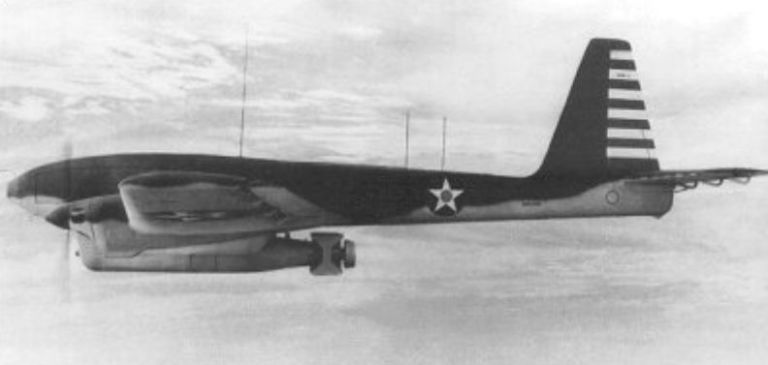Defining an unmanned system.
Unmanned systems have been a popular term for the last decade with the commercialization of…

The military has employed drones in military operations since World War II. In World War II, the United States Navy primarily used these drones for target practice. However, the United States Navy invested in a twin-engine optionally manned bomber aircraft. The technology at the time was primitive for radio control and the unmanned aerial vehicle used a television camera and signals to view and control the aircraft. This aircraft was called the TDR-1 (Mizokami, 2017).

Now unmanned operations have been very appetizing to the United States and Foreign Militaries because the practical applications of unmanned vehicles reduce the risk of loss of human life. The technological advancements of wireless technologies, global positioning systems, and aircraft systems have led to more advantageous and affordable options for high-risk missions rather than using humans that could be exploited or killed during the mission. A journal article, “Unmanned Aerial Vehicles in the Navy: Its Benefits” (2016) by the Portuguese Navy outlined the benefits of utilizing unmanned aerial vehicles in combat operations. The article explores various topics that will be explained in this blog post.
There are some direct benefits to using Unmanned Aerial Vehicles over their human counterparts is training requirements, material loss, human physiology, and cost. To being, humans require an intensive amount of training to complete certain tasks or complete a specific mission (Rosa, Marques, & Lobo, 2016). This training is very time-intensive and costly. Humans that are recruited to complete these types of training can also become injured or killed. This is very financially impactful to the militaries and their training programs. For the United States Navy Seals it cost over $500,000 to train one Navy Seal and around 2.5 years to complete the training without any repeats (Gaskell, 2009).
Human loss versus material loss is an important aspect of the benefits of unmanned aerial systems. The destruction of a machine or robot is a financial burden that can be replaced or repaired. During high-risk missions, like intelligence, surveillance, and reconnaissance (ISR), the loss of human life outweighs some of the benefits of the intelligence that is gathered. If a human is captured and killed, the impact is far greater than the destruction of a machine. The human may have family obligations that would be impacted by the loss of a loved one. Their loved ones could never be replaced in this event (Rosa, Marques, & Lobo, 2016).
Material loss when compared to human life is far less impactful. Material exploration could happen with the loss of some proprietary information however only a limited amount of information may be lost. Humans contain far more information to be exploited that could compromise other missions or human lives (Rosa, Marques, & Lobo, 2016).
Another added benefit of unmanned systems is the lack of physiological needs that are required by humans. UAVs or UVs only need power and limited connectivity to complete their tasks or missions. UVs do not need to eat or sleep and they are not greatly affected by temperature. These capabilities make them or viable options for long-duration surveillance or missions that require multiday or multi-month operations.

While the cost of UVs can be significantly more than some human training, the human cost of life will outweigh some of the cost of unmanned systems. The ease of replacing a UAV on the battlefield is far easier and less time consuming than replacing a trained Sailor, Airmen, or Soldier with the same level of experience and skill. These benefits have made unmanned vehicles very attractive to all militaries across the world and will continue to be developed and implemented to ease the burden of the death of human lives.
I would have to agree with the journal article by the Portuguese Naval Academy, that unmanned aerial vehicles are better for high-risk missions, specifically the intelligence, surveillance, and reconnaissance (ISR) along with some aerial combat operations. These systems allow longer duration flights without the need for human physiology needs to sleep and eat. Also, the training cost to prepare pilots, operators, or Sailors can be outweighed and outperformed by UAVs. As technology increases with these systems their application to save human lives and obtain required information without the risk of exploitation will replace the human aspects of the battlefield and how wars are fought.
Gaskell, S. (2009, April 14). Three Navy SEALS freed Capt. Phillips from pirates with simultaneous shots from 100 feet away. Retrieved from New York Daily News: https://www.nydailynews.com/news/world/navy-seals-freed-capt-phillips-pirates-simultaneous-shots-100-feet-article-1.360392
Mizokami, K. (2017, September 21). The Forgotten Drone of WWII. Retrieved from Popular Mechanics: https://www.popularmechanics.com/military/aviation/a28312/wwii-drone-strike-tdr-1/
Rosa, G. C., Marques, M. M., & Lobo, V. (2016). Unmanned Aerial Vehicle in the Navy: Its Benefit. “Mircea cel Batran” Naval Academy Scientific Bulletin, 39-43.